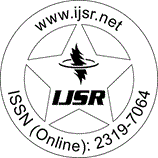Downloads: 93 | Views: 348
Research Paper | Biology | India | Volume 3 Issue 5, May 2014 | Popularity: 6.8 / 10
Protein Based on its Sequence or Structure to an Existing Protein Family
Manish Kumar, Ajay Prakash
Abstract: To discover a new protein we have suggested some methods and also we have proposed how we can review of a protein to an existing protein family. We generally accepted that the three-dimensional structure of a peptide chain is determined by its amino acid sequence. Still; similar folds can have very different sequences. The ultimate task in sequence analysis is to predict the structure and function of a protein based on its sequence. When the protein of interest shares at least 30 % amino acid identity with another protein; then these two proteins generally exhibit similar three-dimensional structure [1]. But when the proteins have the similar structure but divergent sequences; then the consensus sequence motifs can be used to assess the function of an unassigned sequences. Then these consensus motifs usually correspond to the residues interacting with the cofactors; substrate; or other proteins. In this paper we have also done statistical analysis (through SPSS) to classify identical proteins and Evolutionary Relationship and Structural similarity of the proteins.
Keywords: Protein, PIR, SCOP, CATH, Pfam, Superfamilies
Edition: Volume 3 Issue 5, May 2014
Pages: 1582 - 1585
Please Disable the Pop-Up Blocker of Web Browser
Verification Code will appear in 2 Seconds ... Wait
